The Beauty of Diancui: Reviving a Millennium-Old Intangible Cultural Heritage in Hat Ornaments
I. Introduction: The Hidden Splendor of Azure Plumes
Among the many treasures of Chinese craftsmanship, diancui (点翠)—the art of adorning objects with shimmering kingfisher feathers—stands out for its ethereal beauty and intricate technique. Traditionally applied to hairpins, jewelry, and ceremonial hats, diancui symbolizes elegance, prosperity, and imperial grace.
Today, this intangible cultural heritage is experiencing a revival in the world of hat ornamentation. At our Hat Museum, we explore diancui's origins, evolution, and modern reinterpretations—blending heritage with contemporary creativity and sustainability.
II. What Is Diancui? A 2,000-Year-Old Chinese Craft
Diancui is a traditional Chinese craft that uses bright blue kingfisher feathers to decorate hairpins, jewelry, and hat ornaments. It has a history of over 2,000 years, going back to the Spring and Autumn and Warring States periods.
In ancient times, people called it "gold in daylight, green in nightlight" because of its beautiful glow and rarity. During the Qing Dynasty, diancui became especially popular in the royal court. Manchu women wore diancui headpieces to show their noble status and good taste.
Most of the diancui pieces in the Qing palace came from workshops in southern China. The royal family had a special department called the Leather Warehouse, which collected kingfisher feathers and hired skilled craftsmen to make these artworks. Workshops in cities like Beijing and Shanghai also produced diancui items.
But after 1933, as society changed, the last diancui workshop closed, and the craft slowly disappeared. In recent years, however, thanks to national support for traditional culture and young people's interest in retro styles, diancui is coming back to life.
III. The Diancui Process: A Delicate Art
Creating a diancui piece involves several meticulous steps:
Feather Selection: Artisans carefully select kingfisher feathers based on color, texture, and density to ensure uniformity and brilliance.

Base Frame Making: Using gold, silver, or copper, craftsmen create intricate filigree patterns as the structural base of the ornament.
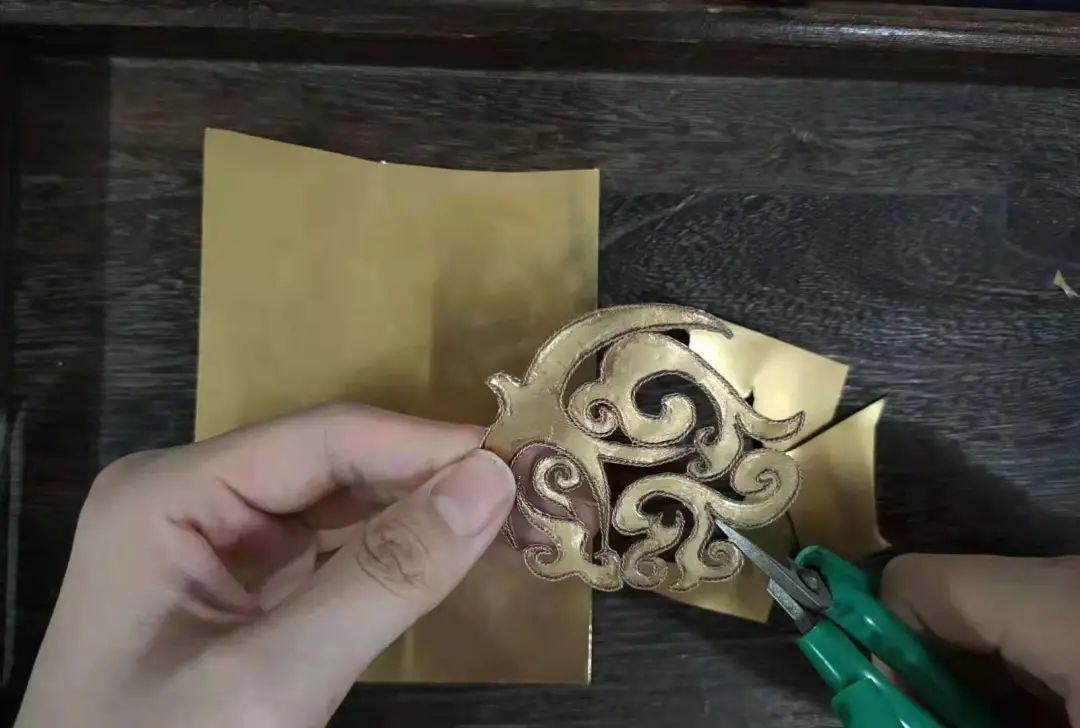
Feather Cutting: The selected feathers are delicately trimmed to match the floral patterns of the base frame.
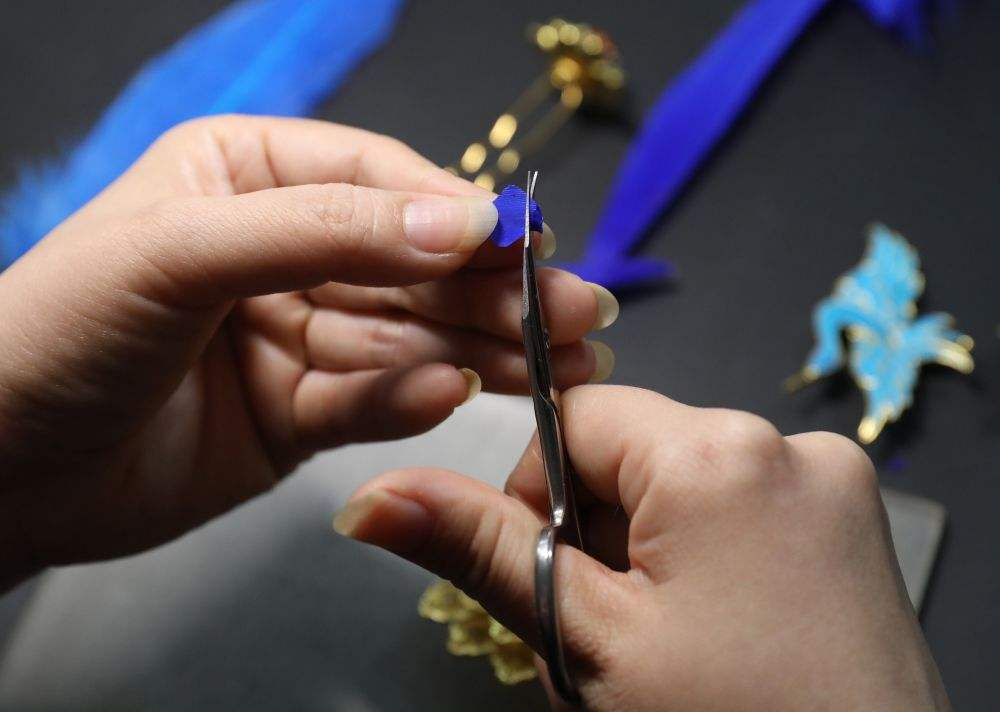
Feather Pasting: Feathers are treated and meticulously pasted onto the base, requiring precise alignment and seamless bonding.
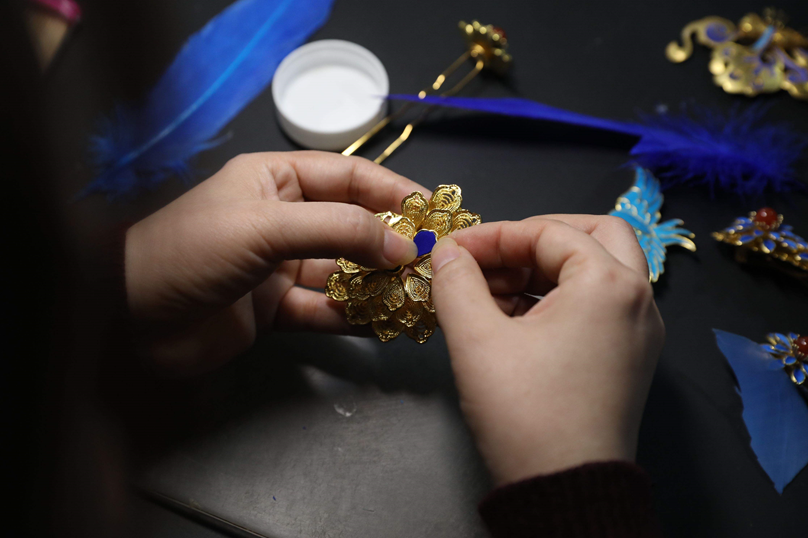
Decorative Inlaying: After the featherwork is completed, the piece is further enhanced with inlays of pearls, agate, red coral, or jade as required by the design.
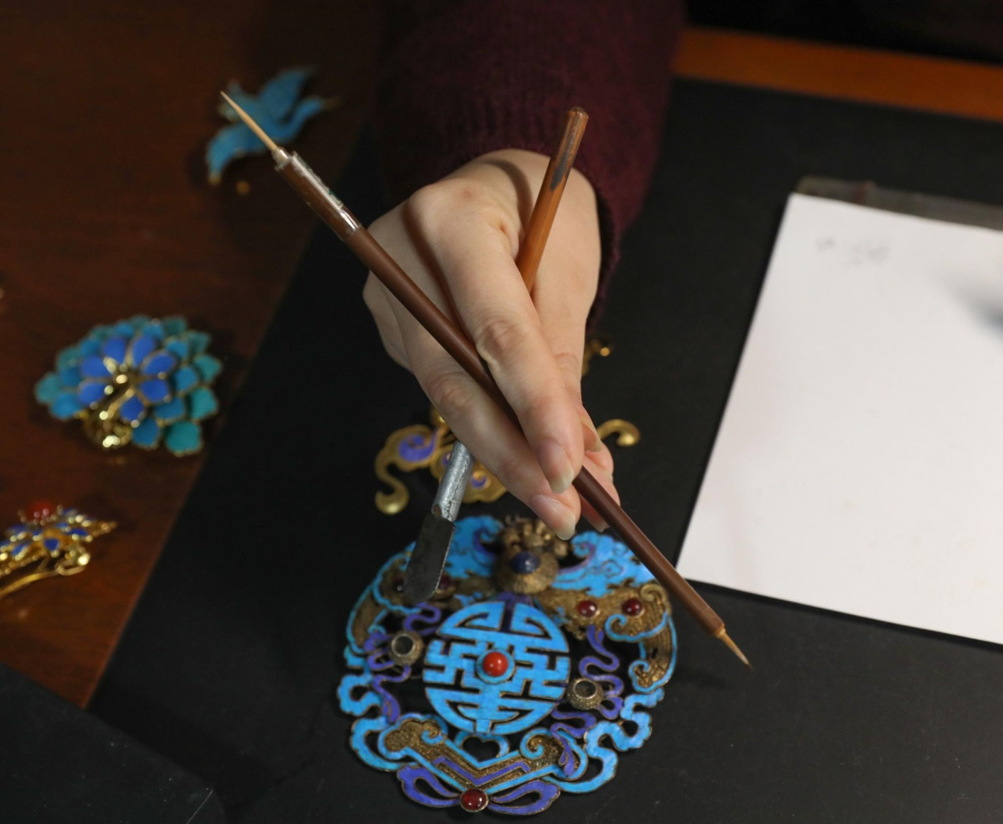
This intricate process demands exceptional patience, experience, and concentration—a true test of the artisan's skill and dedication.
IV. Exhibition Spotlight: Three Diancui Masterpieces
Our museum's current exhibition showcases three extraordinary diancui artifacts that embody the depth, elegance, and heritage of this ancient craft:
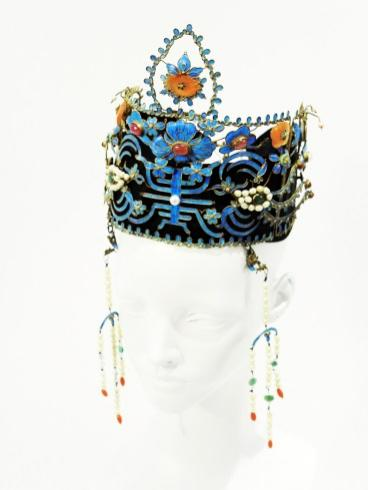
1. Copper Cloisonné Diancui Phoenix Coronet
This exquisite headdress originates from Wula Town in Jilin, once a prominent Manchu settlement during the Ming and Qing dynasties. Preserved by a noble family, it is a rare fusion of cloisonné enamel and diancui featherwork.
Design Highlights:
Plum blossoms set with agate, and three peony flowers inlaid with tourmaline.
The character "寿" (shòu, meaning longevity) symbolizes good fortune and long life.
Double phoenixes formed with pearls, coral, and kingfisher feathers adorn both sides.
Pearl and diancui tassels on the front add luxurious movement and elegance.
This coronet is a vivid representation of Manchu-Han cultural integration and imperial-era sophistication.
2. Silver-base Kingfisher Feather Ruyi
Shaped like a long-handled scepter, this piece is a symbolic object of good fortune. The word "Ruyi" (如意) means "as you wish", making it a popular token of auspicious blessings during the Ming and Qing dynasties.
Cultural Significance:
In the Qing court, Ruyi pieces were often presented as tributes by officials and bestowed by emperors and empresses.
Beyond the palace, they were also popular among the public as elegant and meaningful gifts.
Craftsmanship:
The silver base provides a noble structure, while diancui feather inlay enhances its brilliance.
The vivid blue featherwork against silver highlights the luxury, grace, and rich symbolism of this timeless artifact.
3. Dianzi – Manchu Women’s Formal Headdress
The Dianzi is a distinctive hat worn by Manchu women during formal occasions from the mid-Qing Dynasty through the early Republic period. It reflects both practical and ceremonial elements of Manchu culture.
Design and Cultural Role:
Positioned at the back of the head, the Dianzi secures the hair while serving as a high-value decorative piece.
Its frame is formed with iron wire and woven into auspicious shapes.
The number and type of Dianhua (ornamental flowers) on the Dianzi indicated a woman’s rank and social status.
Artistic Detail:
The front of this piece features a flower-shaped kingfisher feather decoration, arranged with precision and harmony.
Inlaid pearls and jade stones further elevate its ceremonial beauty.
As a symbol of identity, elegance, and hierarchy, the Dianzi is a powerful example of how hats in Chinese culture go far beyond function — they tell stories of tradition and status.
V. From Beauty to Burden: Environmental Costs and Ethical Shifts
Historically, diancui's brilliance came at a cost—the kingfisher population was harmed by overharvesting. As awareness of environmental ethics grows, the craft has undergone thoughtful transformation.
Challenges: Traditional methods involved harming endangered birds, raising concerns about sustainability and cruelty.
Solutions: Synthetic alternatives and feather dyes now mimic the radiant blue hues without harming wildlife.
Materials such as enamel, colored foil, and even 3D-printing techniques are being explored.
Our company is committed to eco-conscious design and heritage preservation, integrating craftsmanship with responsibility.
VI. Reimagining Tradition: Diancui's Renaissance in Modern Hats
As heritage meets innovation, diancui finds new life in modern fashion and headwear design:
Creative Fusion: Modern artisans combine diancui-inspired elements with metals, openwork, pearls, and even futuristic materials.
Storytelling in Design: Each piece becomes a narrative—of history, identity, or transformation—allowing tradition to speak through contemporary aesthetics.
Our in-house designers draw from these timeless techniques to create headwear that honors the past while shaping the future.
VII. Corporate Stewardship: The Museum's Vision and Expertise
Our museum is more than a gallery—it is a living archive, built to educate, protect, and innovate.
Purpose:
Preserve endangered techniques like diancui.
Celebrate cultural diversity in global hat history.
Inspire sustainable creativity for future generations.
Expertise:
Decades of hat design and manufacturing.
Partnerships with artisans and researchers.
Innovation in eco-friendly materials and production.
We believe that tradition thrives best when it is made part of today’s creative conversation.
VIII. Conclusion: Ensuring a Millennium-Old Craft Endures
Diancui's story is one of beauty, resilience, and rebirth. As we bring these luminous pieces back into public awareness—through exhibitions, design, and storytelling—we also safeguard their meaning for the future.
We invite you to visit our Hat Museum and experience the splendor of diancui firsthand. Witness how a craft born from feathers and fire continues to inspire a new generation of artistry, elegance, and purpose.
Looking for hats that are truly stylish in design and eco-friendly? We are your one-stop sustainable solution from fabric design to finished hats. Contact us today to create your stylish!
Looking for similar colors? Check out our hat collection now!